With Covid lurking around every corner, we didn’t do much traveling this year – in fact the small amount of traveling we did was all in British Columbia except for 2 days just across the border in Alberta. So most of our wildlife experiences in 2021 were close to our home in Logan Lake, southern interior of BC.
Winter
Winter is a lean time for seeing wildlife, but there are some interesting options. I usually try to get up into the high grasslands in winter, hoping to find Snow Buntings, Horned Larks and, once in a long while – a Snowy Owl.
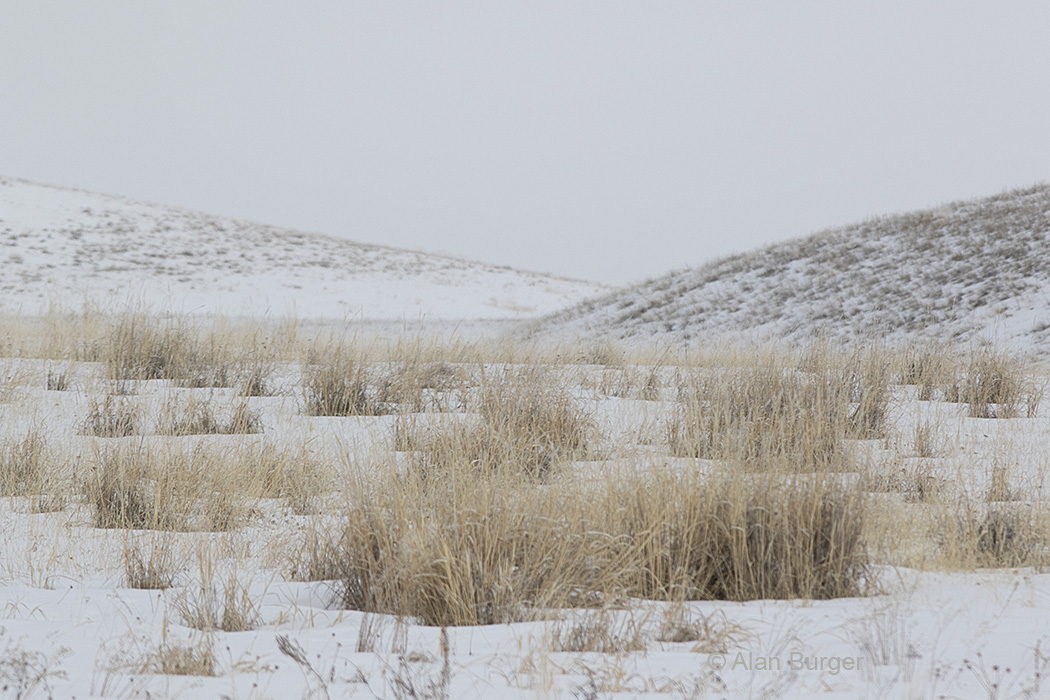
I love the subtle light and texture of snow and grass with softly rounded hills. Douglas Lake plateau – 29 January 2021. © Alan Burger
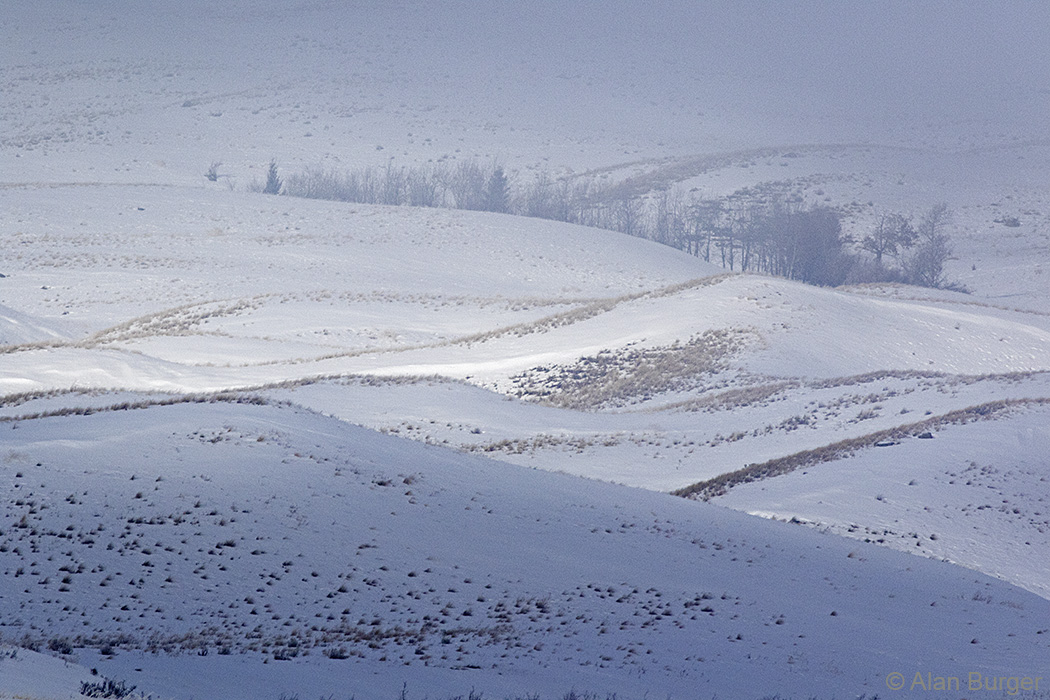
Muted sunlight breaking through a snowy day – Douglas Lake plateau, 29 January 2021. © Alan Burger
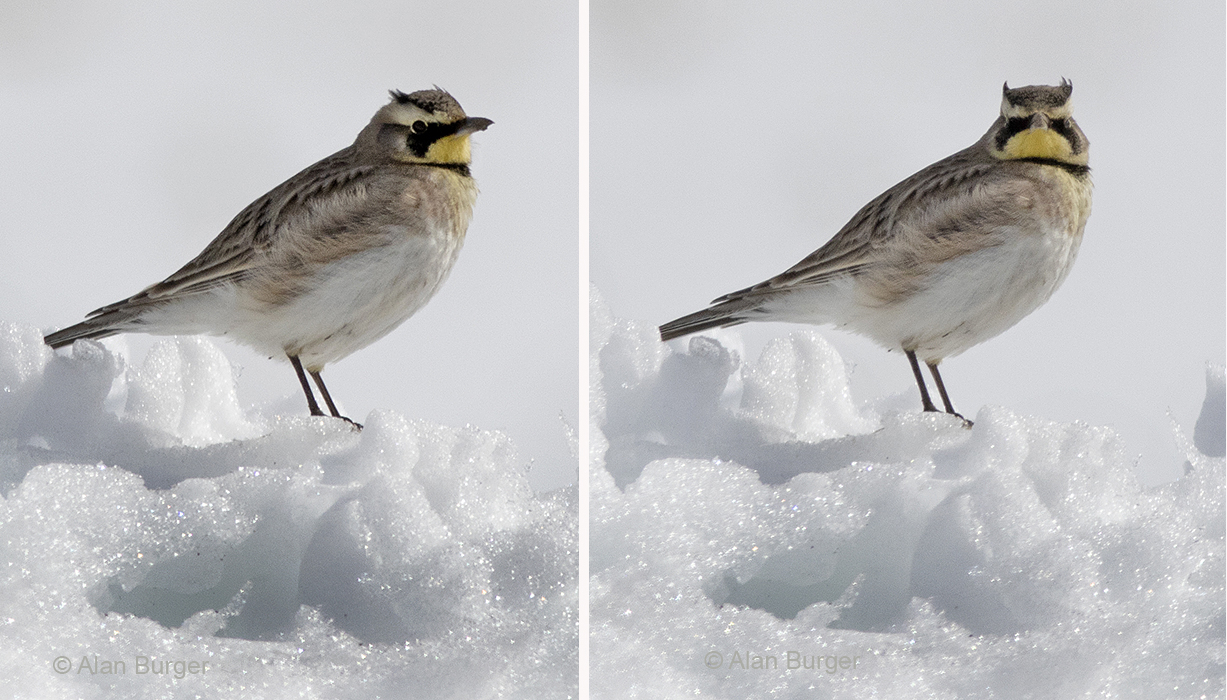
Horned Larks breed on the Douglas Lake plateau. This bird might have been an early arrival or just passing through – 12 March 2021. © Alan Burger
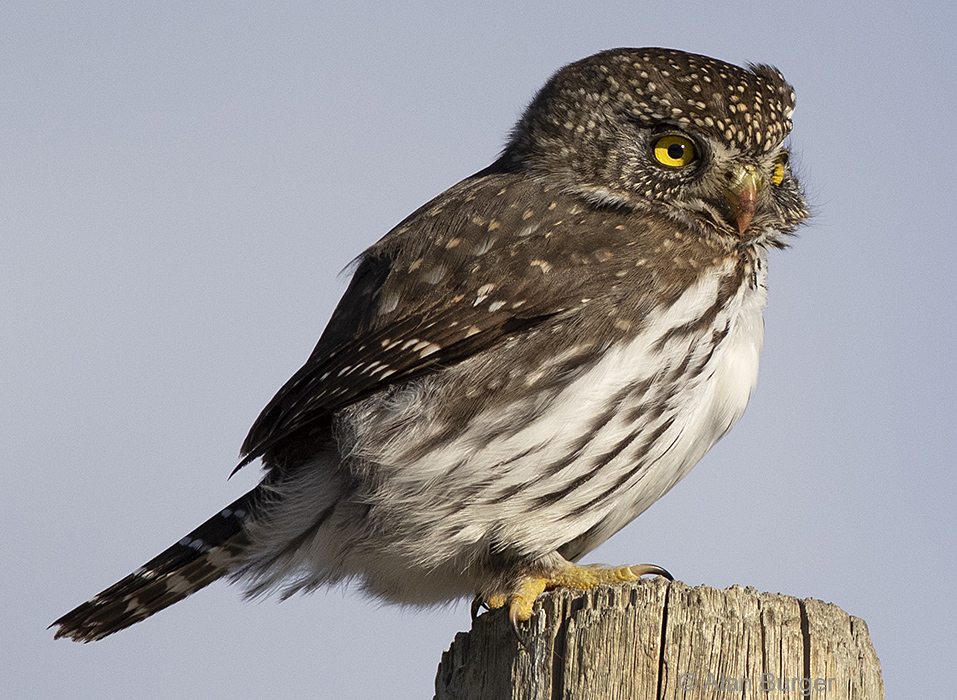
Northern Pygmy-owls are year-round residents in our area, and they usually hunt in daylight, providing opportunities for winter shots like this. Near the Quilchena Hotel – 3 January 2021
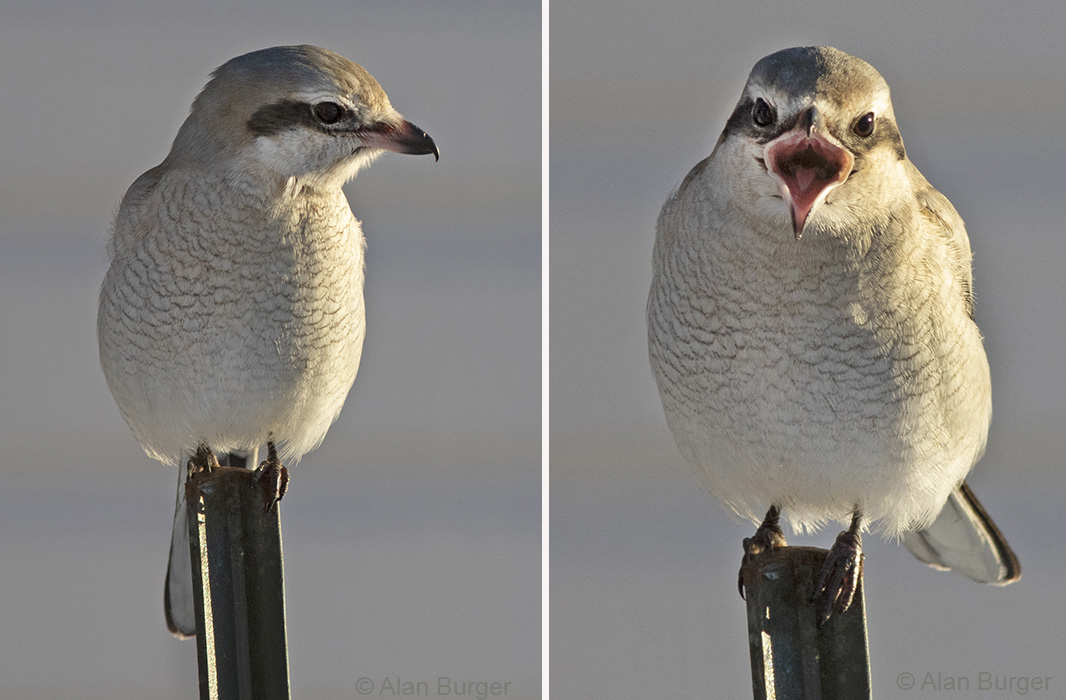
I took these photos of a juvenile Northern Shrike through our living-room window in Logan Lake. On an exceptionally sunny January day this bird was having some success catching flies that were coming out of winter hiding spots. © Alan Burger
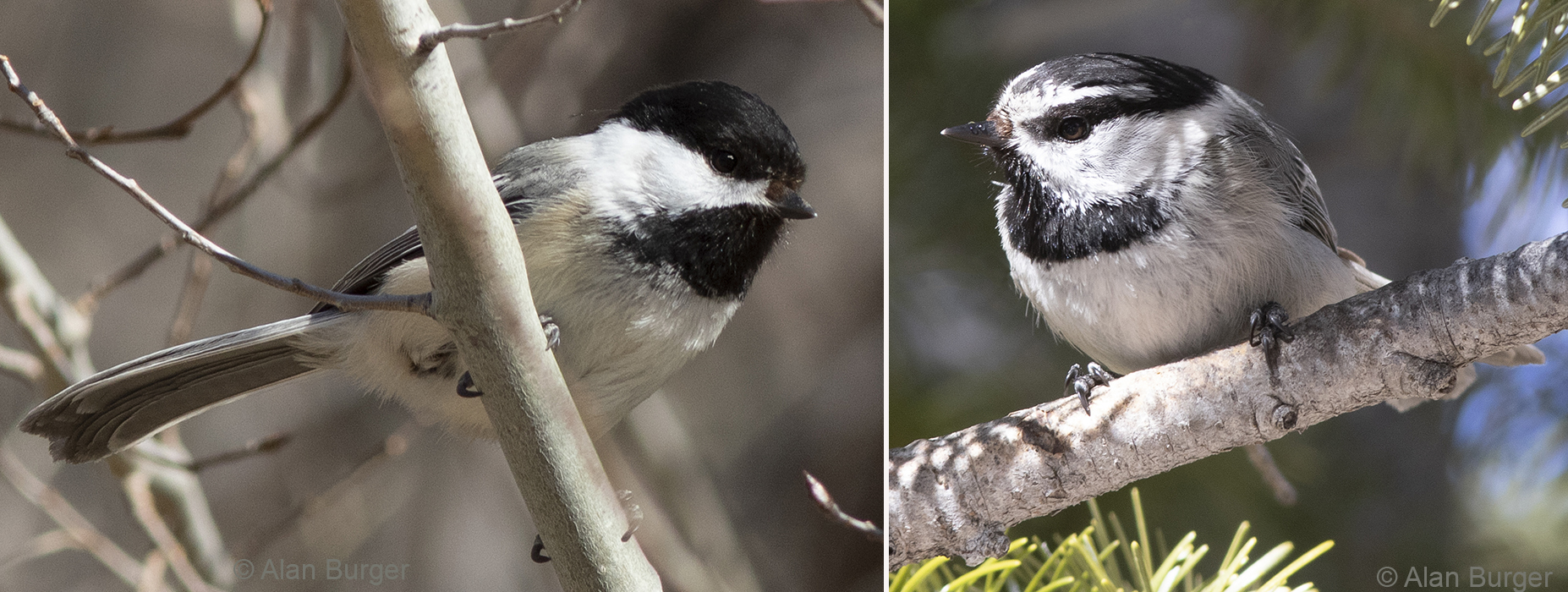
Two species of chickadees liven up our garden all year round: Black-capped Chickadee (left) and Mountain Chickadee (right). They are often together in mixed flocks in winter. © Alan Burger
Spring
My favourite season in Canada. Plants begin to come alive, insects emerge, migrant birds arrive and one is left amazed at the life that has survived the savage winter cold.
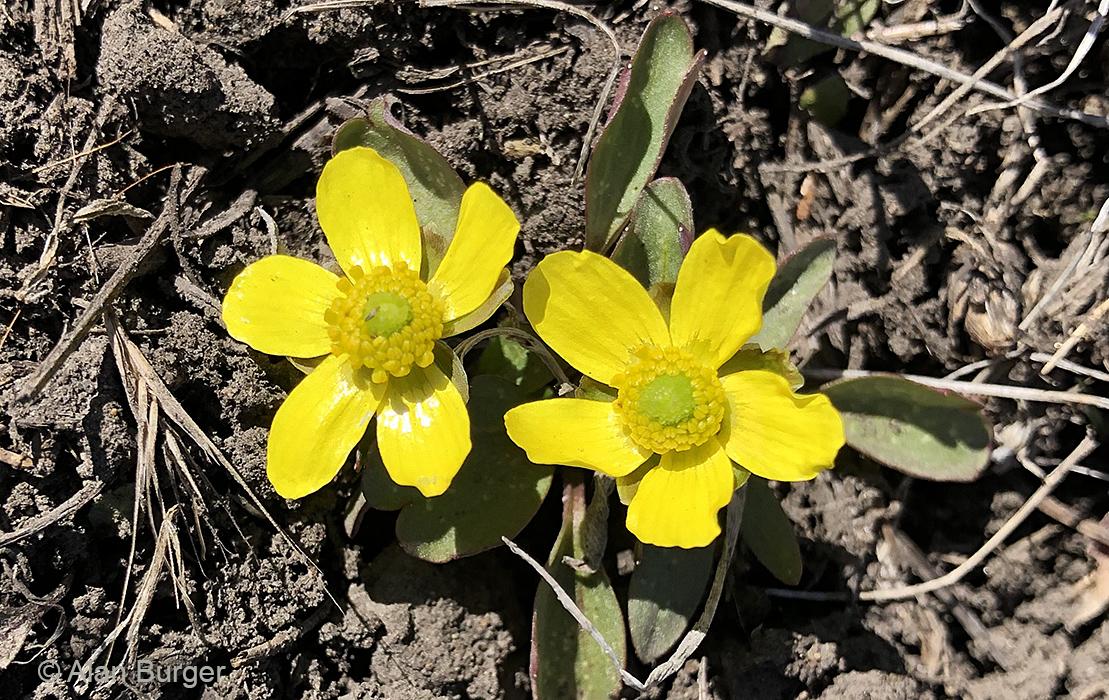
The tiny Sagebrush Buttercup (Ranunculus glaberrimus) is always the first plant to bloom in our area. The shiny yellow petals, less than 2 cm across, act as solar collectors and provide a touch of warmth to visiting insects in the chilly spring days. © Alan Burger
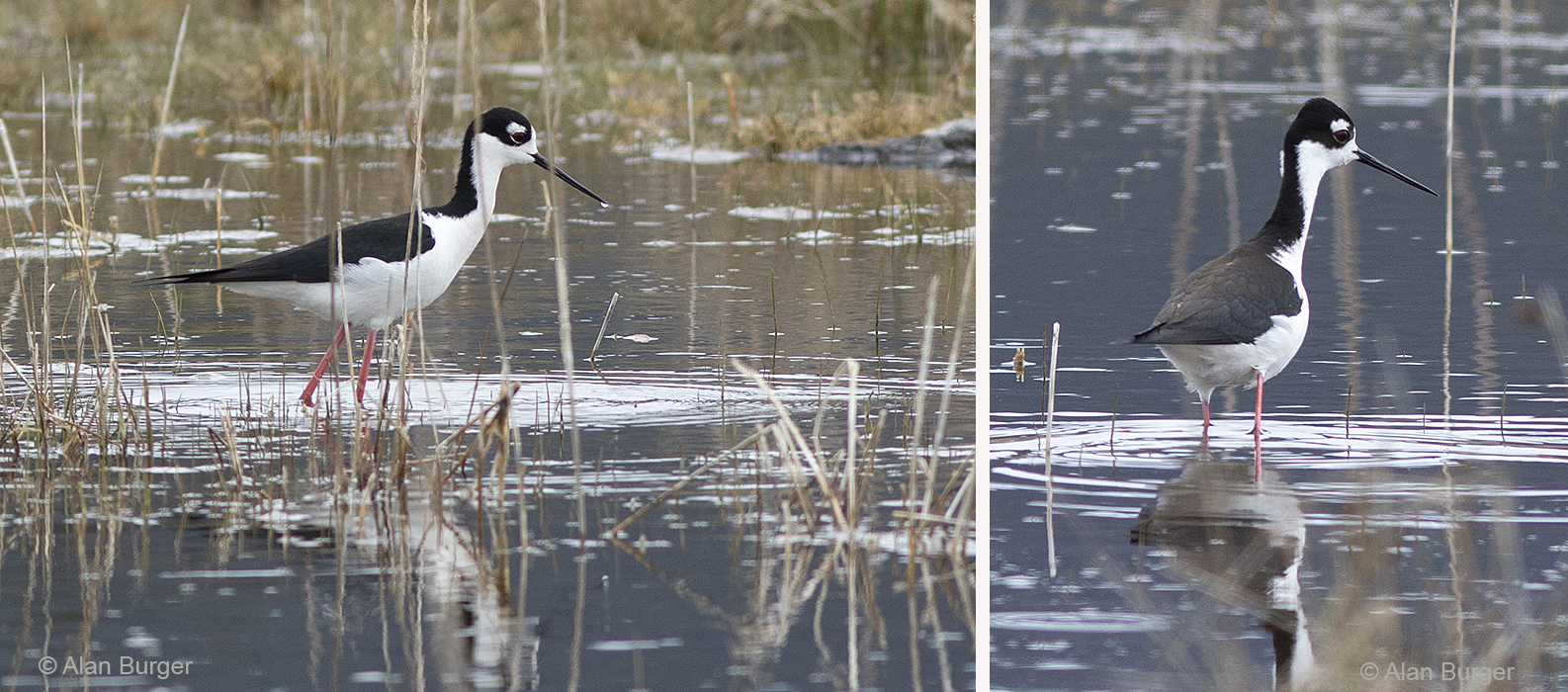
For the past two years in spring, a pair of elegant Black-necked Stilts has been foraging in the shallow ponds at Tunkwa Provincial Park, just 15 km from our home. They are rare breeders in BC so I keep hoping they will stay and breed, but they haven’t yet. 5 May 2021. © Alan Burger
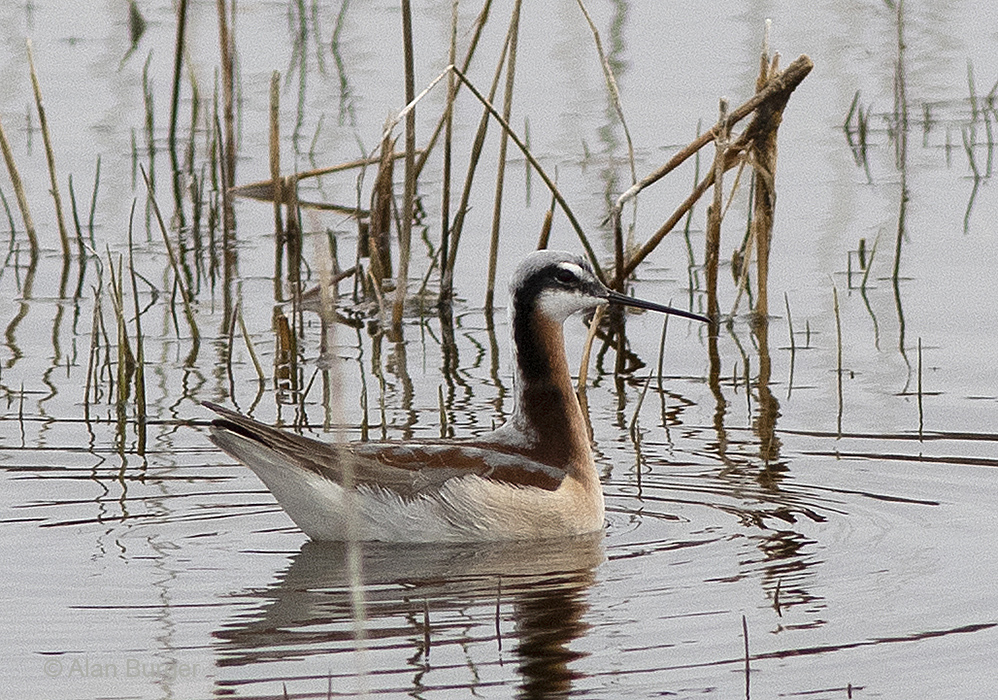
In the same ponds as the stilts was this Wilson’s Phalarope. They do regularly breed in the BC interior but I’ve yet to see evidence of breeding in the Logan Lake area. Tunkwa Provincial Park, 5 May 2021. © Alan Burger
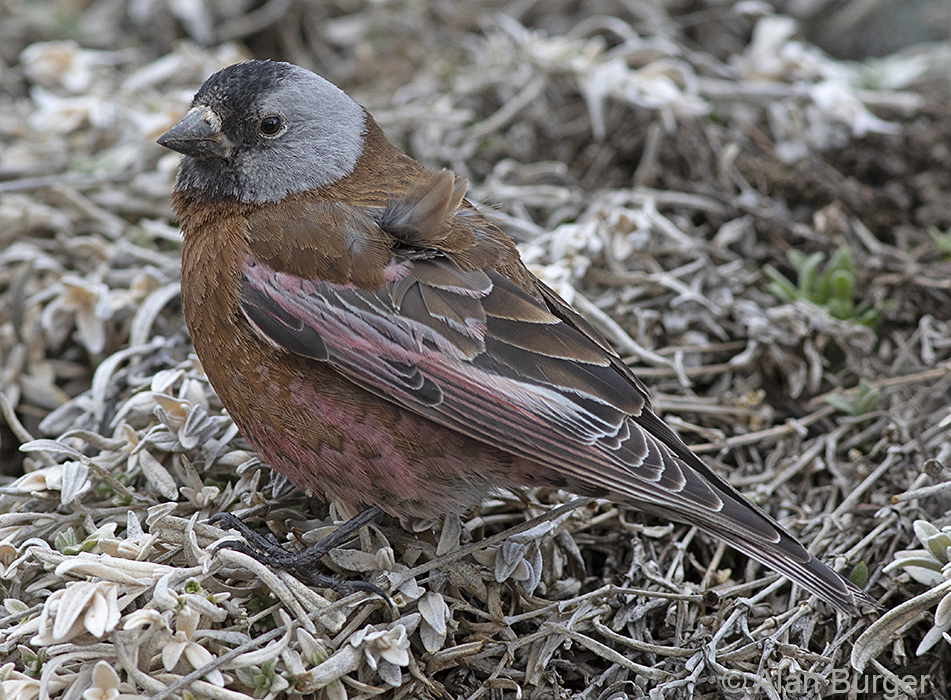
One normally encounters Grey-crowned Rosy-finches in high alpine areas at the edges of snow banks. But two of these handsome finches appeared in our backyard among the juncos. This bird is actually the coastal race of the species (hepburni), not the race one would expect in the interior. Logan Lake, 10 April 2021. © Alan Burger
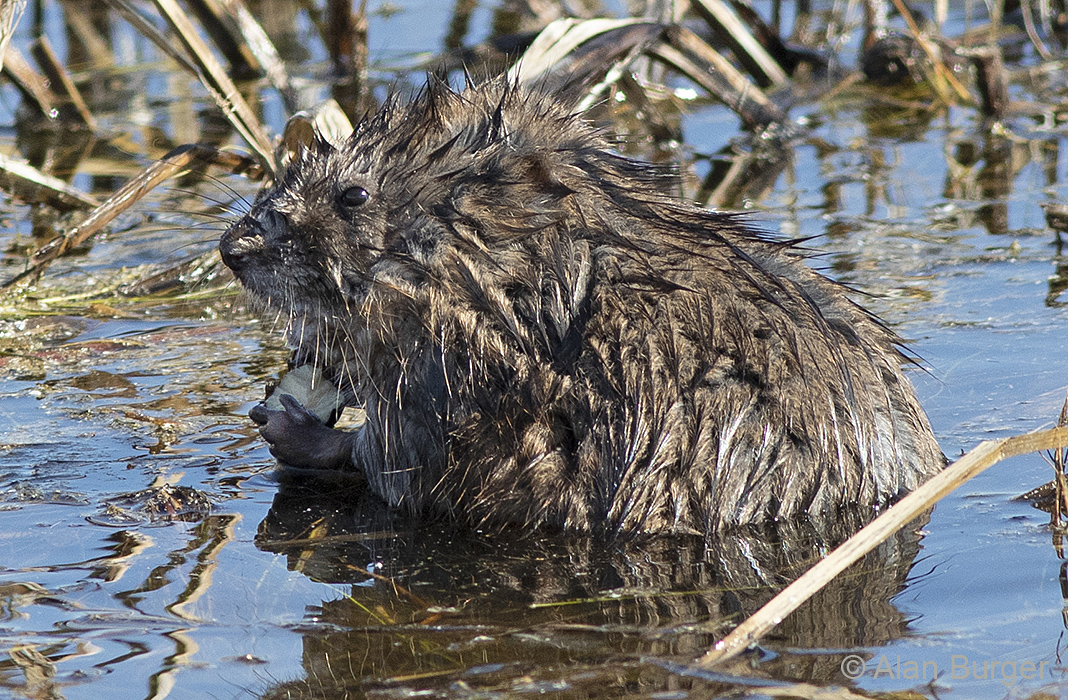
Muskrats are quite common in our area, usually in small ponds or lakes. This one was munching on a tuber among the cat-tails at Tunkwa Provincial Park – 17 April 2021. © Alan Burger
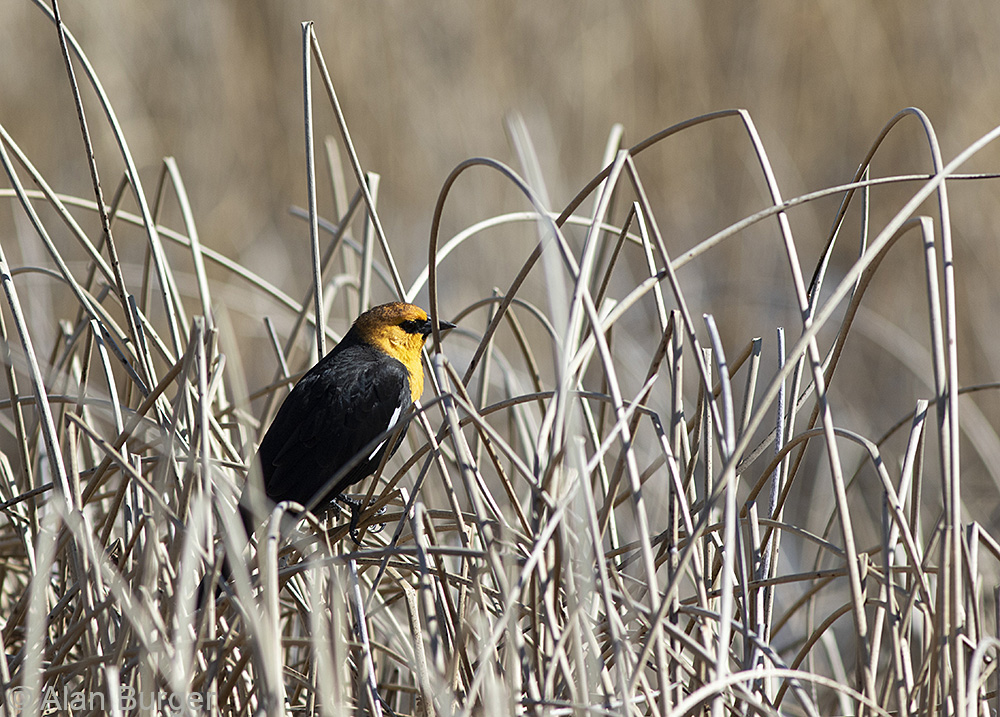
The rushes and cat-tails around small ponds are the usual habitat for Yellow-headed Blackbirds. This is a male. Just before I took the photo he was giving his weird harsh song. Tunkwa Provincial Park, 19 April 2021. © Alan Burger
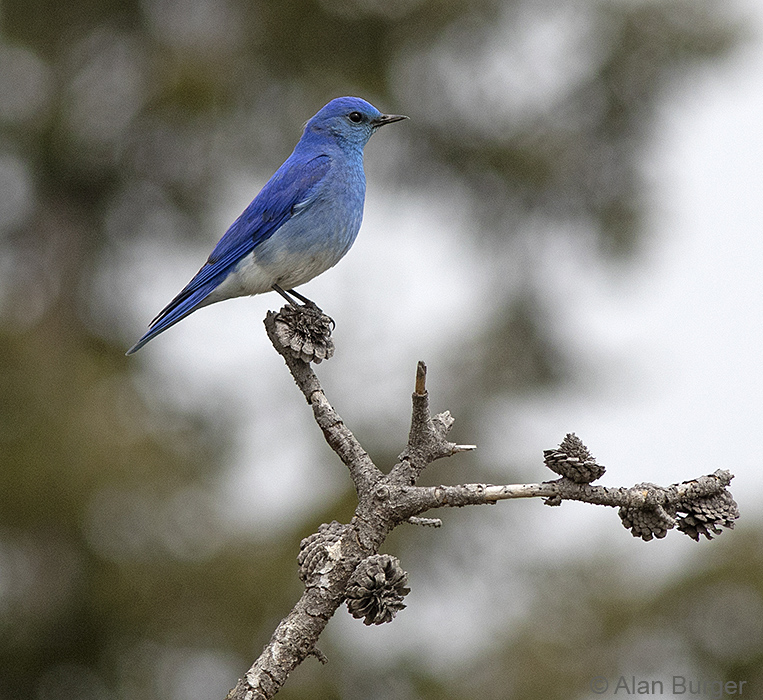
A male Mountain Bluebird – Tunkwa Provincial Park, 5 May 2021. © Alan Burger
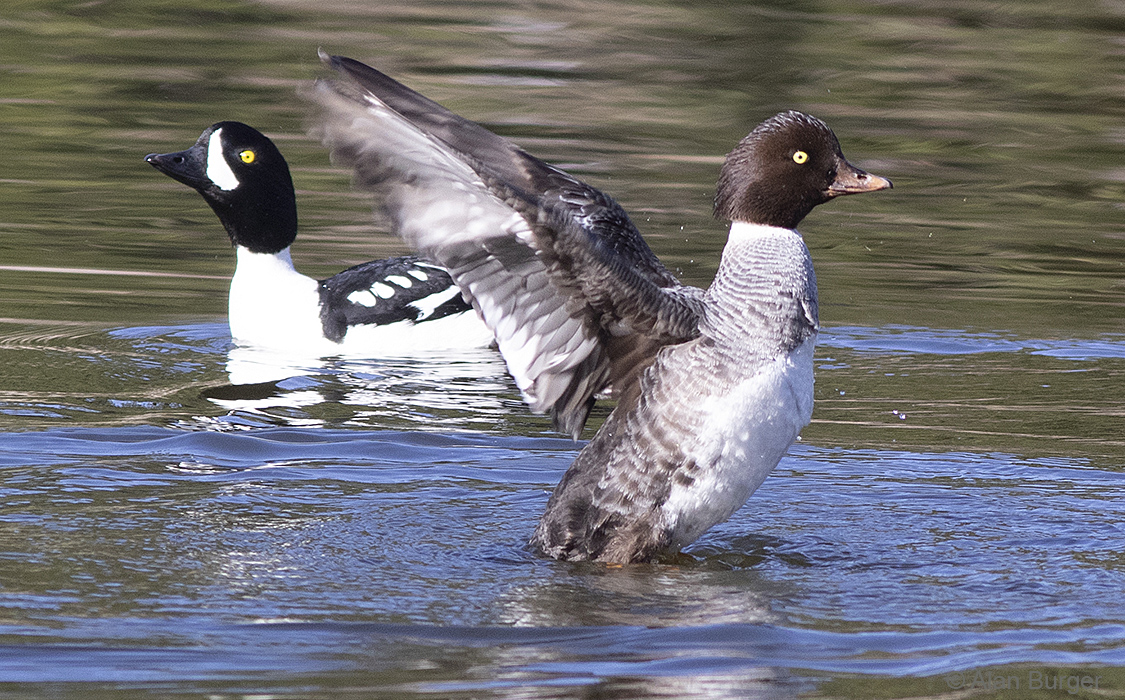
Spring sees lots of waterfowl courtship – Barrow’s Goldeneyes at the Logan Lake marsh – 14 May 2021. © Alan Burger
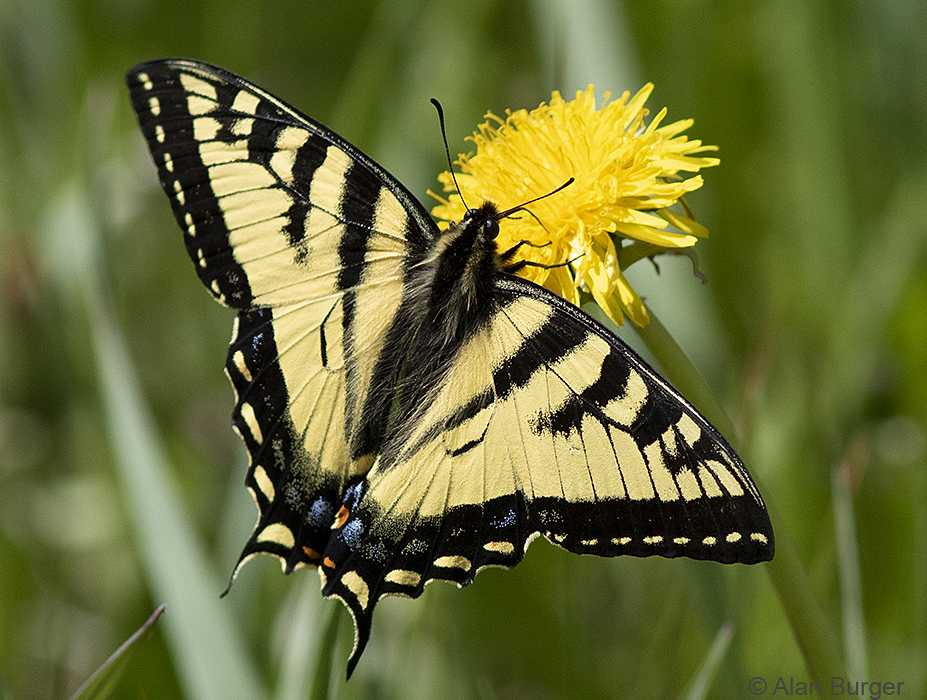
One of our largest butterflies – a Canadian Tiger Swallowtail on a dandelion flower – Lundbom Commonage near Merritt, 26 May 2021. © Alan Burger
In early June I drove up to northeastern BC for 2 weeks. Stopped at several wildlife hotspots and spent several days around Tumbler Ridge with friends. I was pleasantly surprised at the abundance of large mammals I encountered, despite the ever-present human activity of logging, oil and gas extraction and some ranching.
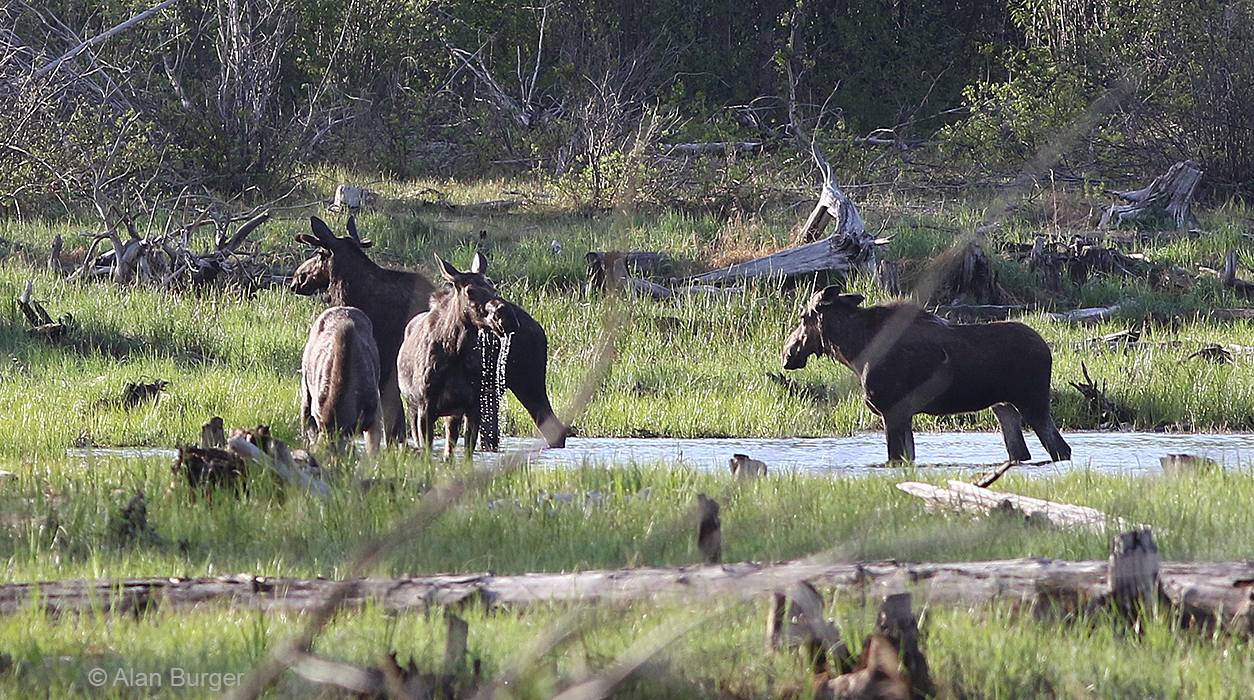
I spent a couple of days at the Muhaga Marsh near Mackenzie in central BC. There is a bird banding station here but it was boarded up. In the nearby marshes were numerous Moose. At one point I could see 10 at once, scattered around the wetlands – these 4 were part of that aggregation. 2 June 2021. © Alan Burger
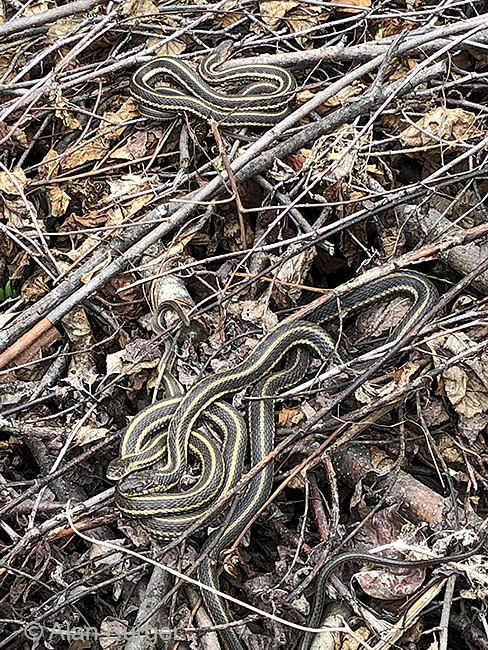
Common Garter Snakes basking in the spring sunshine. They have probably just emerged from their winter hibernaculum. Muhaga Marsh, 1 June 2021. © Alan Burger
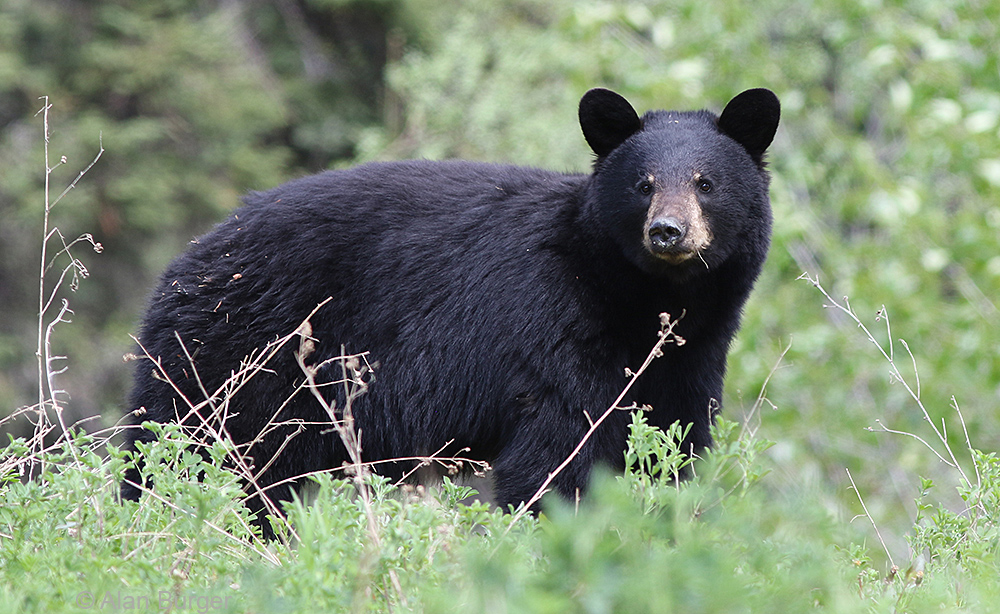
Black Bears were common too – this one was next to the highway near Chetwynd – 2 June 2021. © Alan Burger
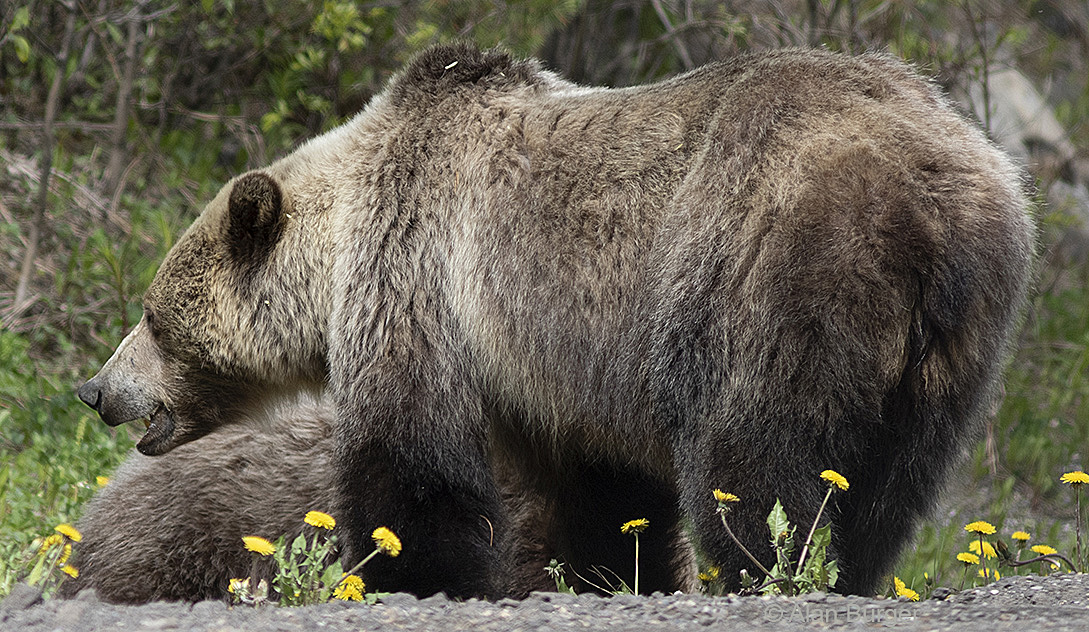
One of the highlights of my trip was to have this family of Grizzly Bears – mom and 2 large cubs – eating dandelions next to the highway near Tumbler Ridge – 8 June 2021. © Alan Burger
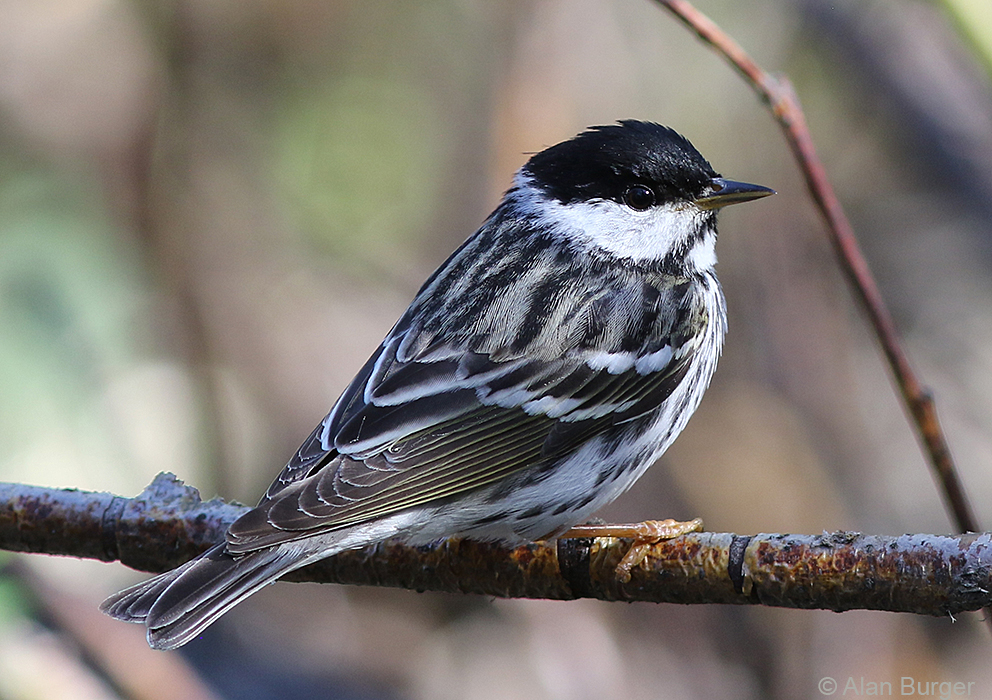
Northeastern British Columbia supports many birds that are rare or absent in the rest of the province – Blackpoll Warbler is one of those species. This male was singing at the Bullmoose Marsh near Tumbler Ridge, 3 June 2021. © Alan Burger
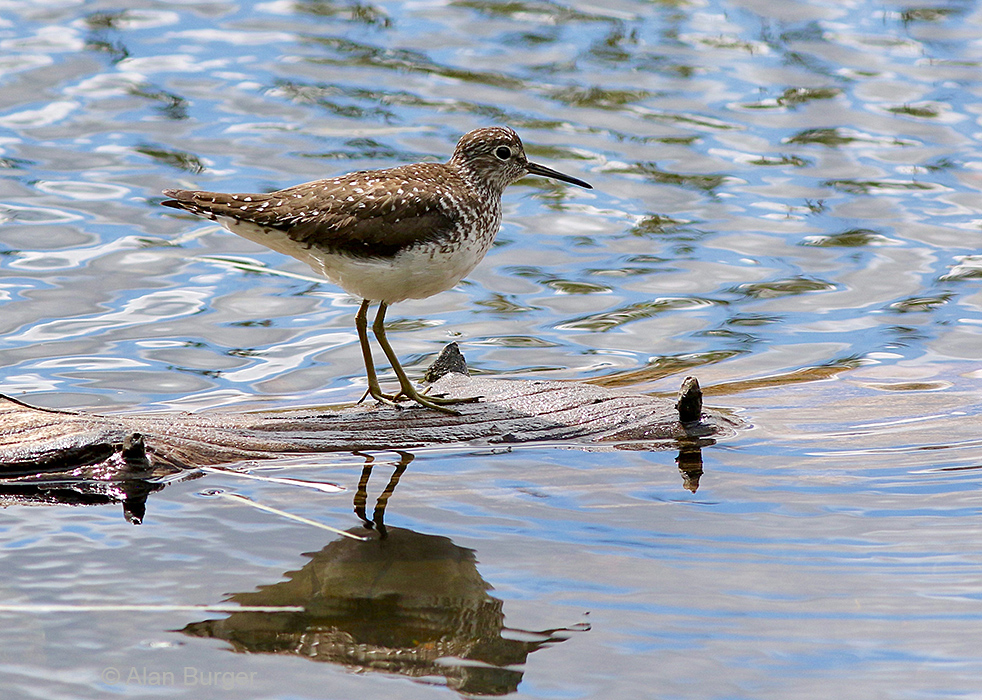
Also at Bullmoose Marsh were a pair of Solitary Sandpipers – a rare species in most of BC. 8 June 2021. © Alan Burger
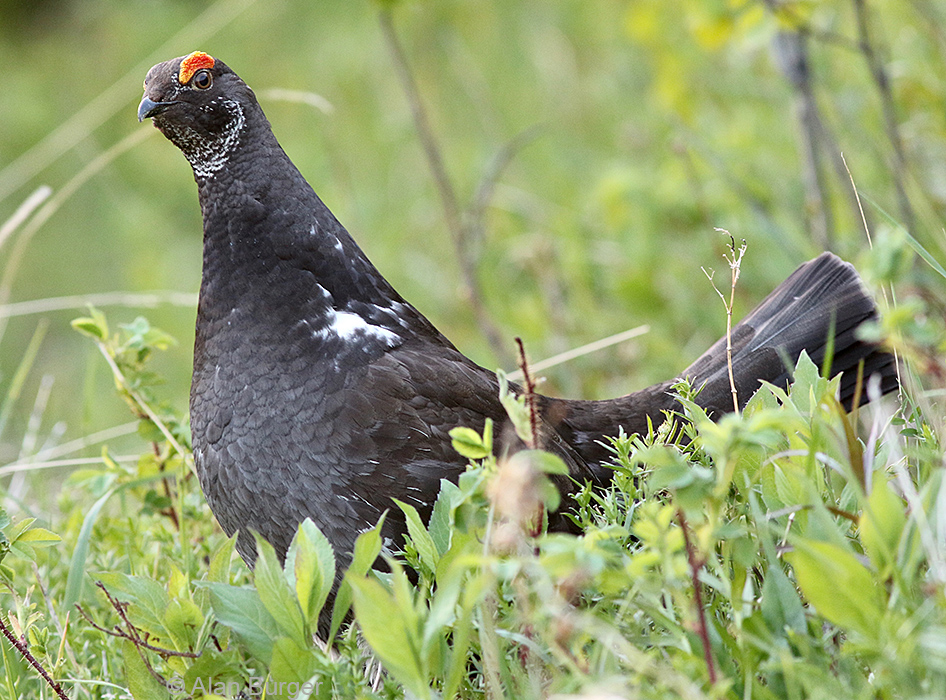
A short hike in the hills above the town of Tumbler Ridge produced this male Dusky Grouse – 3 June 2021. © Alan Burger
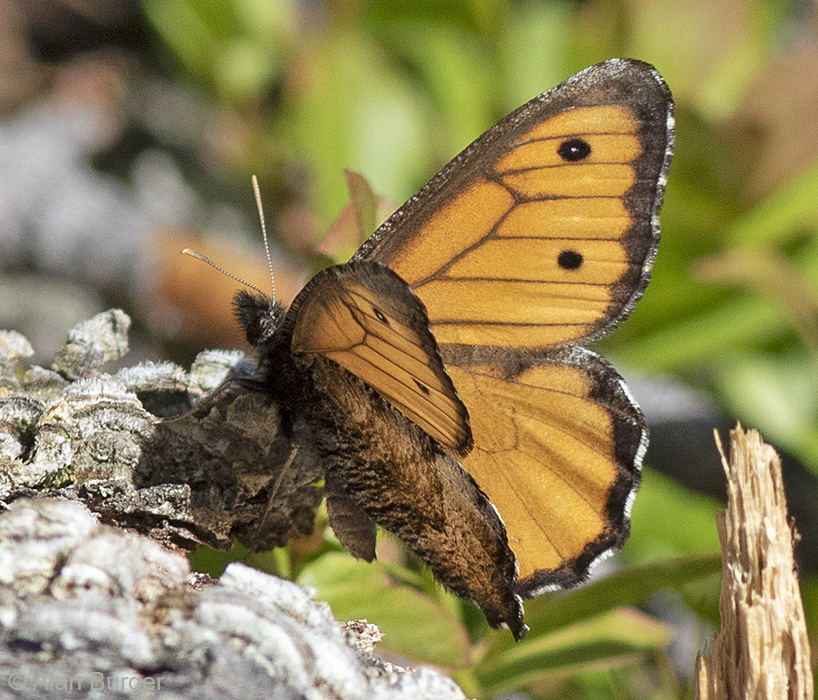
Macoun’s Arctic butterfly (Oeneis macounii) in the forest near Tumbler Ridge – 9 June 2021. © Alan Burger
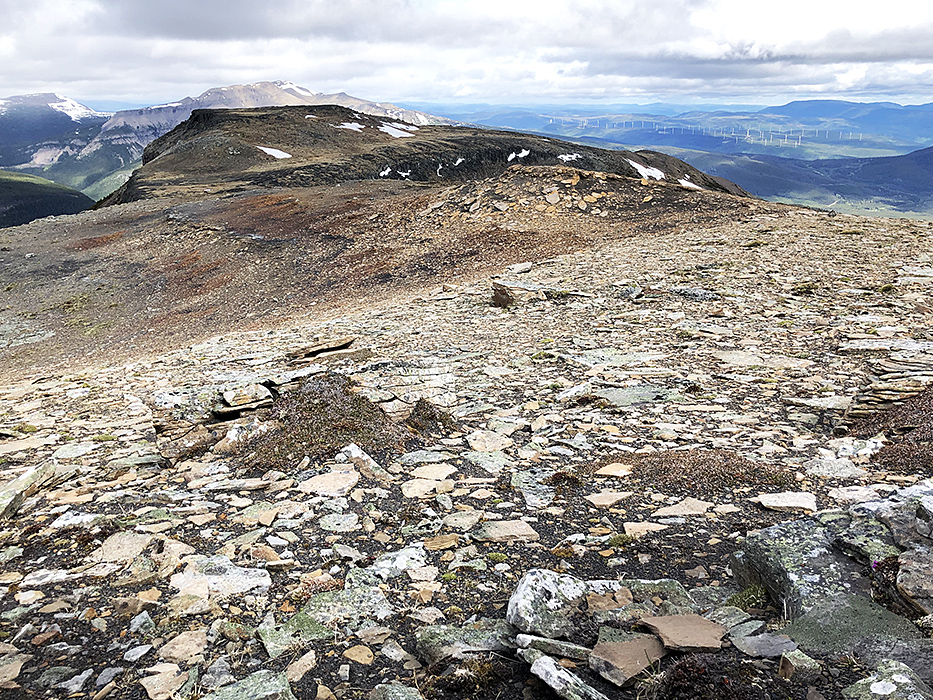
Tumbler Ridge lies among the foothills of the Rocky Mountains and provides ready access to some excellent alpine habitats – Mt Spieker, 10 June 2021. Note the large wind turbine farm in the distance. © Alan Burger
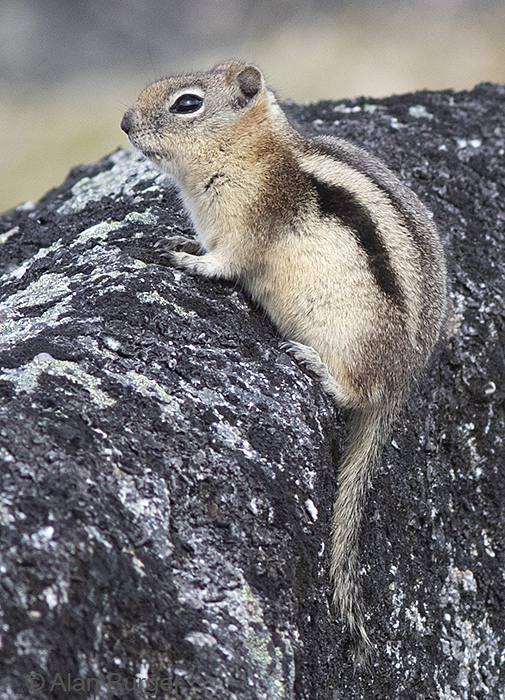
Golden-mantled Ground-squirrel in the alpine of Mt. Spieker near Tumbler Ridge – 10 June 2021. © Alan Burger
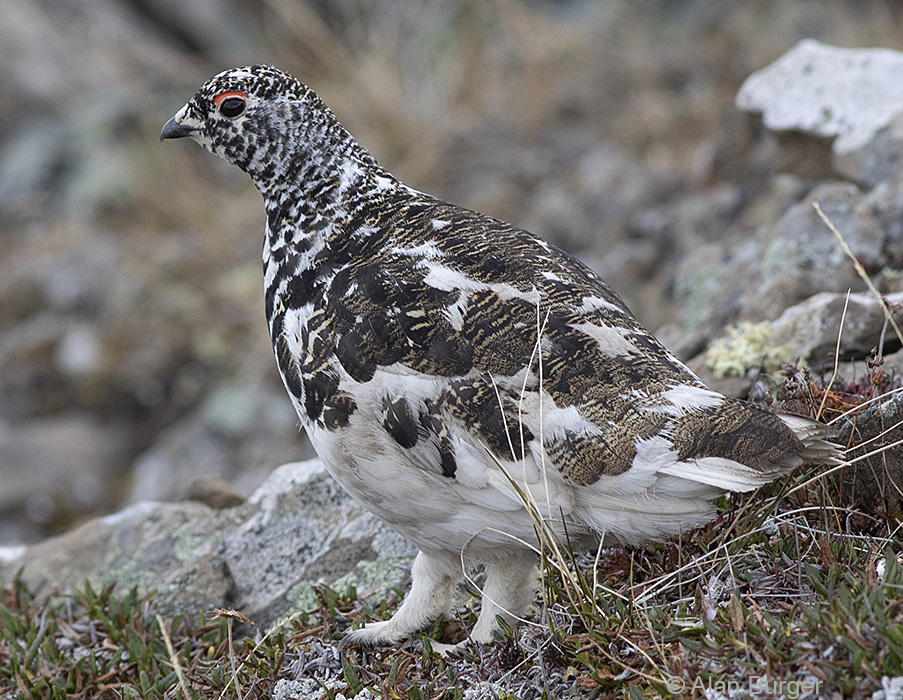
White-tailed Ptarmigan on Mt. Spieker, 10 June 2021. © Alan Burger
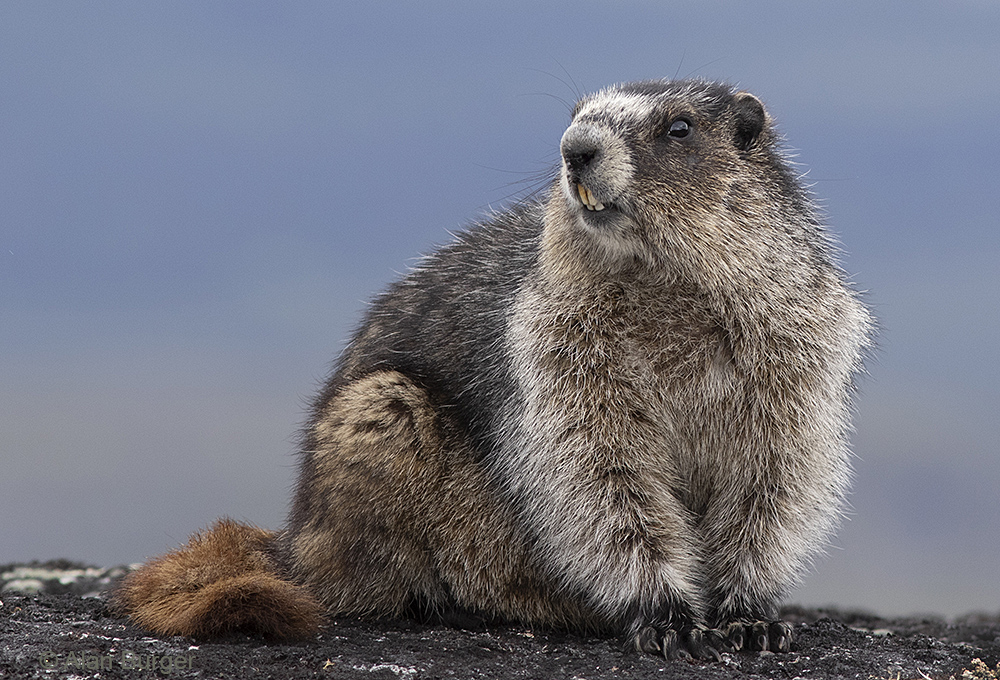
Hoary Marmot on Mt. Spieker, 10 June 2021. © Alan Burger
On my way home from Tumbler Ridge I spent a couple of nights, and a lovely day of hiking in Mount Robson Provincial Park in the heart of the Rockies.
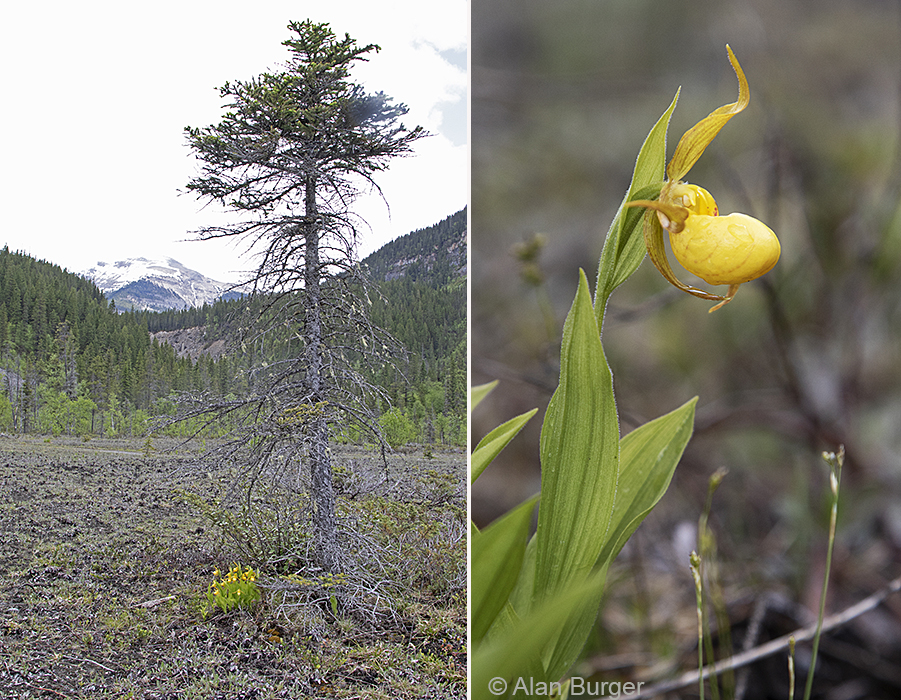
In a seemingly barren rocky stretch was this splash of colour – Yellow Ladyslipper orchid (Cypripedium calceolus). Mt Robson Provincial Park, 12 June 2021. © Alan Burger
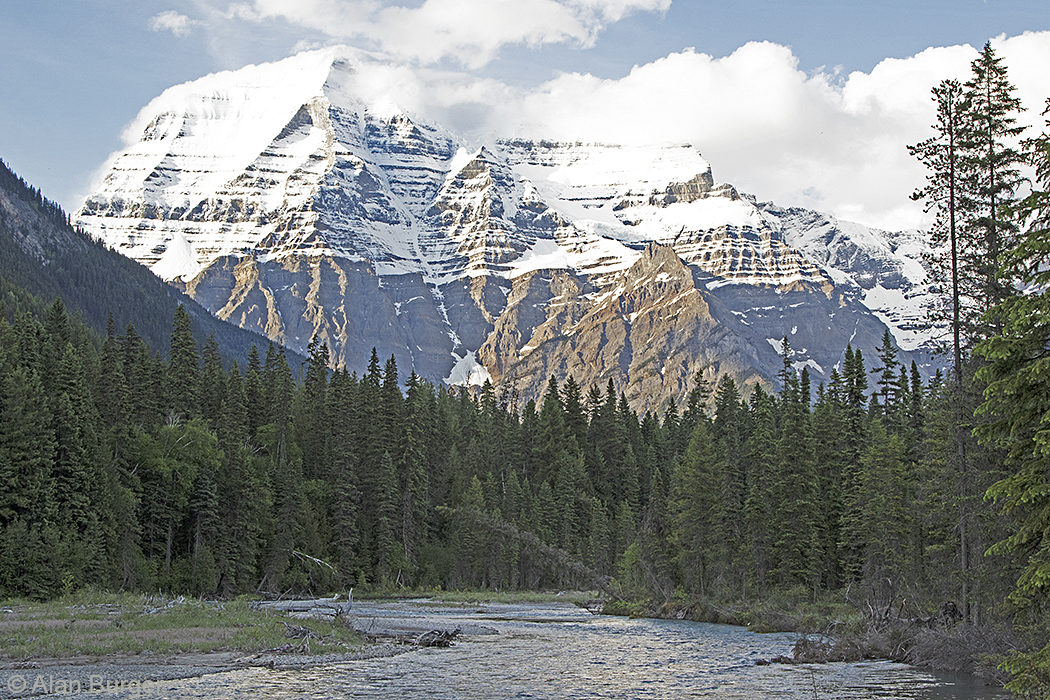
After a day in cloud, Mount Robson finally emerged in all its glory as the sun was setting, 12 June 2021. © Alan Burger
Summer
Southern British Columbia had a rather brutal summer in 2021. First we had the “heat dome” with unprecedented high temperatures day after day in late June and early August. Even at Logan Lake, elevation 1100 m, we had 3 successive days over 40C and 4 weeks when it was over 30C most days. Then, driven by the heat and drought came the wildfires. Huge forest fires burning in many parts of the province. We endured weeks of thick smoke and the stress of the Tremont wildfire getting closer to our town Logan Lake. This fire eventually burnt 635 square km of forest, caused us to evacuate our town for 8 days, burnt to within 200 m of our house and destroyed the cherished ski and hiking trails bordering the town. The town was only saved by heroic work by 170 firefighters and a lot of heavy equipment.
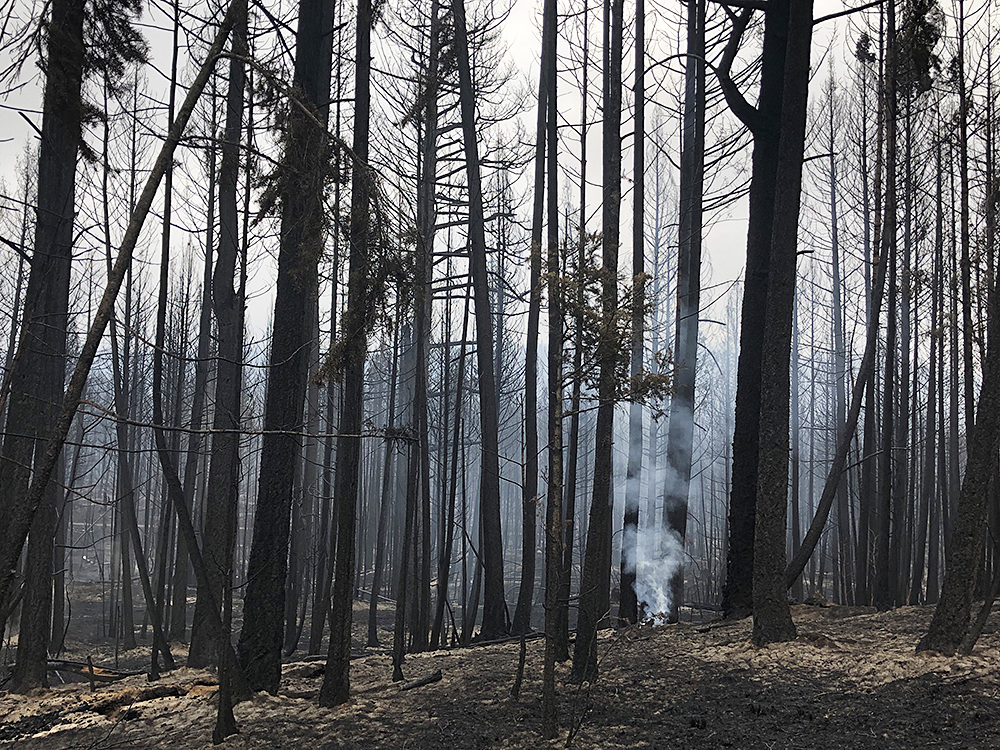
This is what the forest adjacent to Logan Lake looked like when we returned from evacuation. Smouldering continued for a couple of weeks. 23 August 2021. © Alan Burger
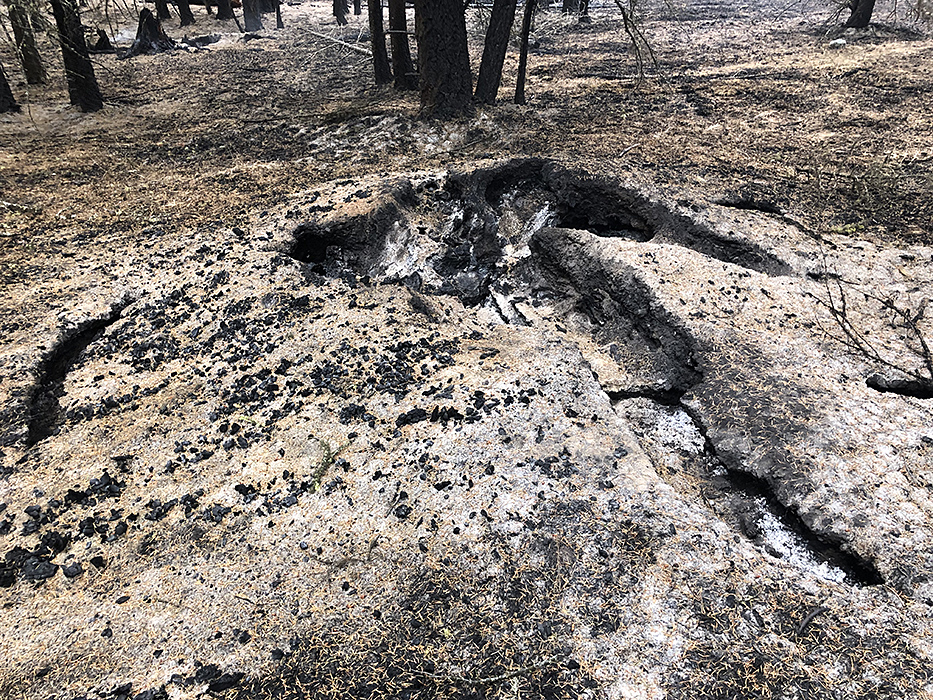
The fire was so intense that it burnt up roots creating underground tunnels. 23 August 2021. © Alan Burger
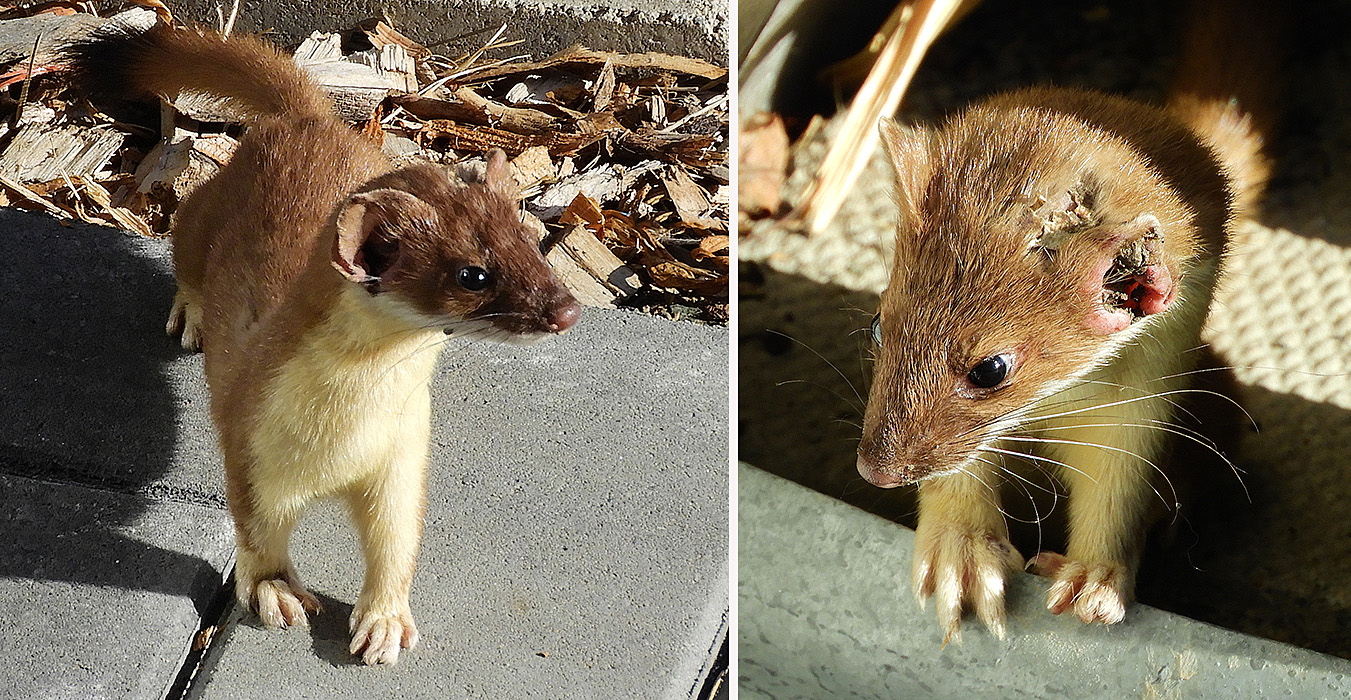
A few days after our return home this Long-tailed Weasel showed up in our garden. It has injuries, probably burns from the wildfire or hot ash. 2 September 2021. © Alan Burger
Woodpeckers are one of the few bird species that one still sometimes finds in the burnt forest, mostly at the few trees that are still alive with just scorched bark.
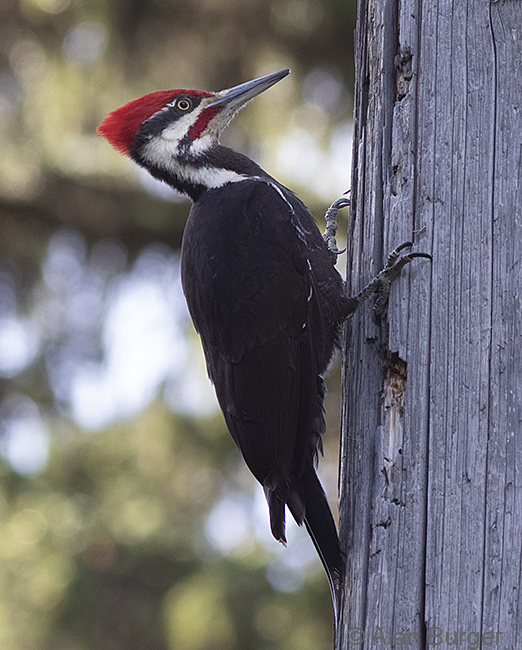
A male Pileated Woodpecker in the Logan Lake ski trails forest. © Alan Burger
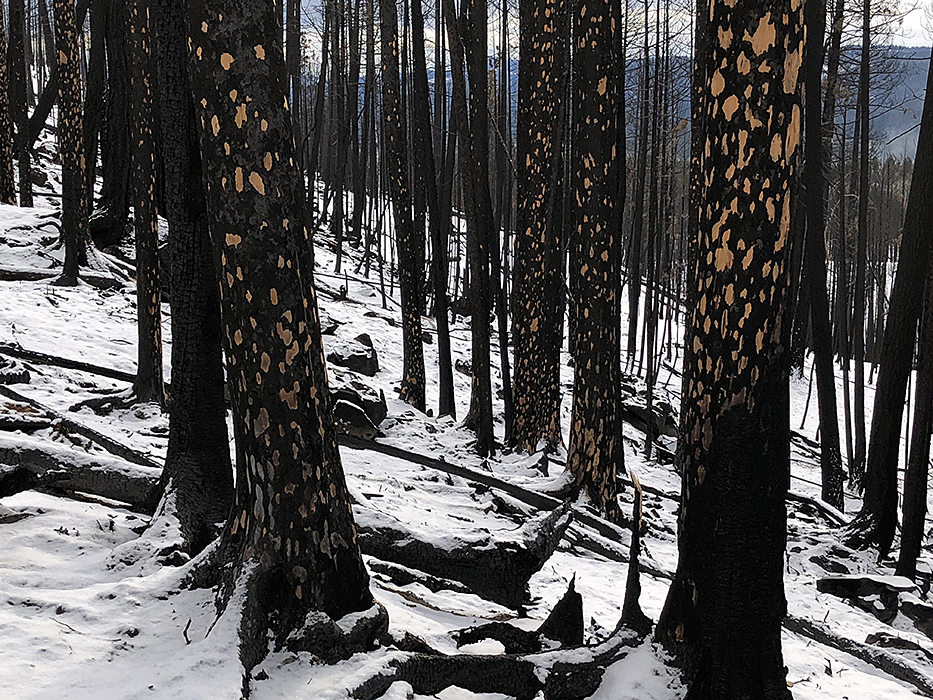
Months after the fire many trees show these distinctive markings – presumably where woodpeckers have flaked off the bark to seek insects beneath. Cooked insects maybe? Logan Lake ski trails, 7 November 2021. © Alan Burger
Before the evacuation we did escape the smoke for a wonderful 5-day trip to Cathedral Provincial Park. I’ve posted photos of that trip here: Cathedral Park 2021
During this time we also spent several days kayaking in nearby Mamit Lake and enjoying the plentiful wildlife there. I’ve posted photos of that here:
Birding by kayak on Mamit Lake, Summer 2021 – click here
More Mamit Lake wildlife – August 2021 – click here
Here are a few pre-fire photos
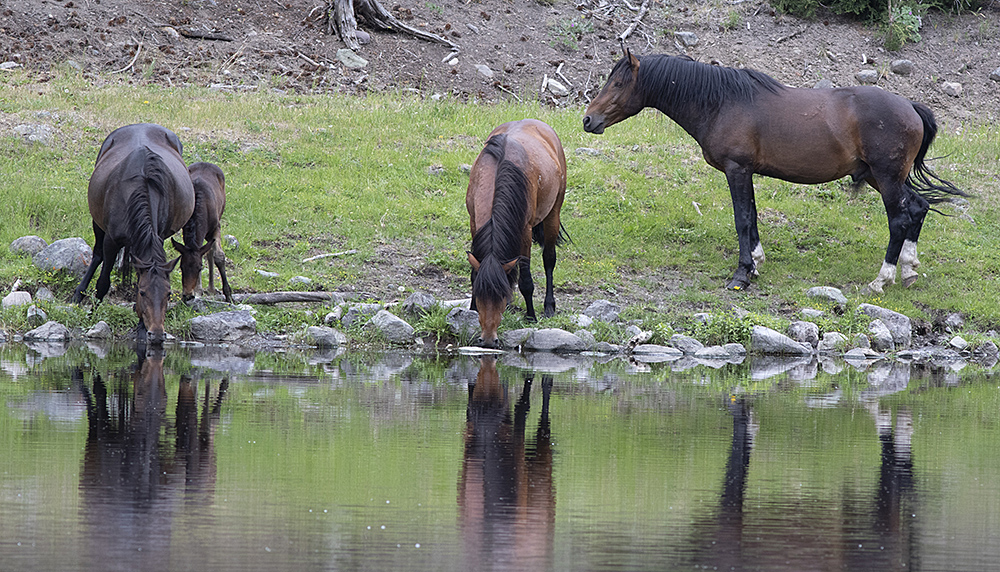
Wild horses are a feature of the Logan Lake area. In winter they do a lot of damage to our carefully groomed XC ski trails, but at other times they are quite fun to see.
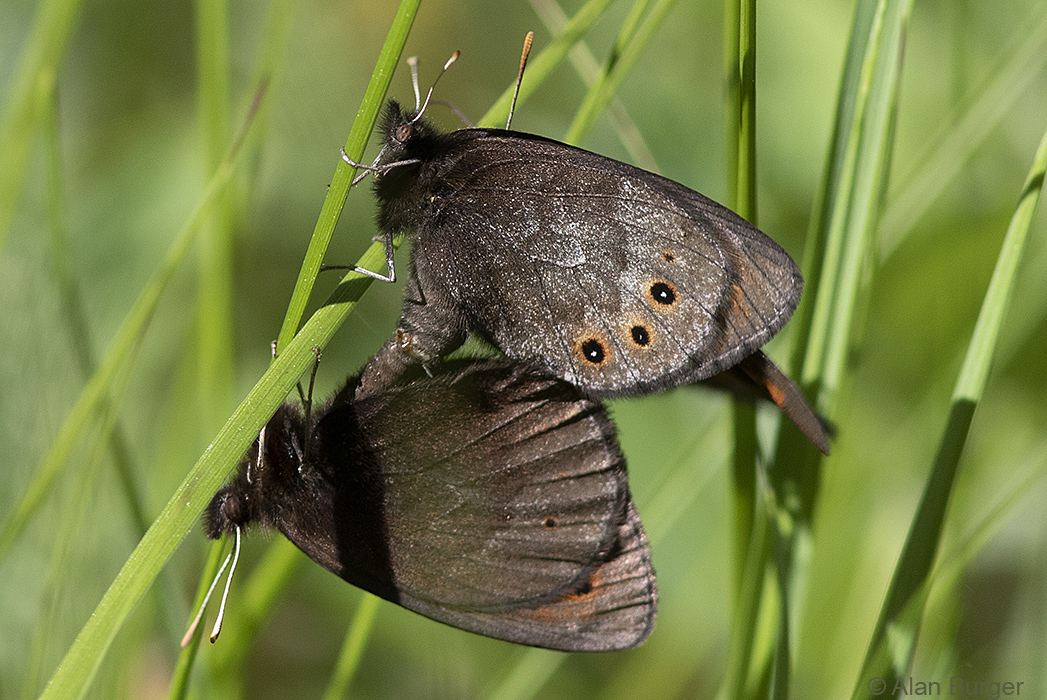
A mating pair of Common Apline butterflies (Erebia epipsodea) in a meadow near Logan Lake – 22 June 2021. © Alan Burger
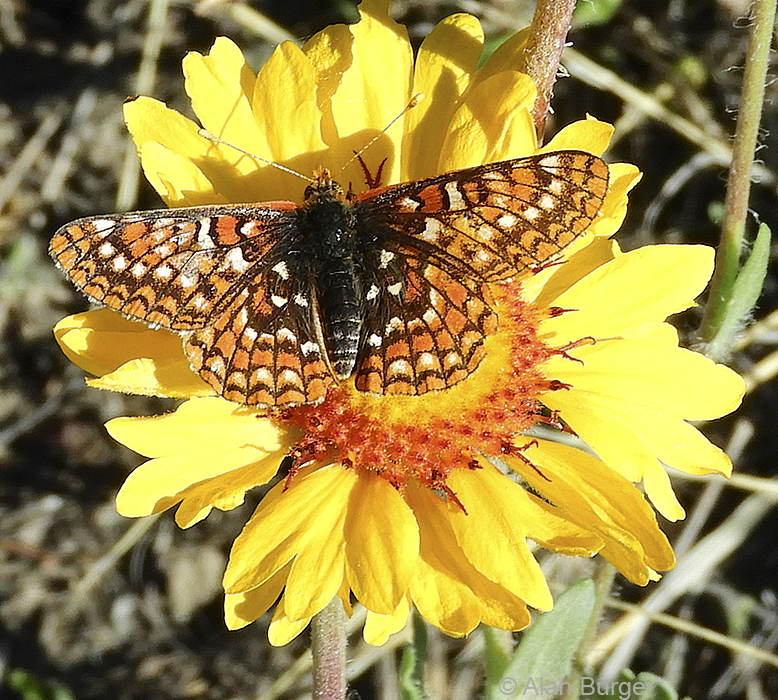
Anicia Checkerspot butterfly (Euphydryas anicia) nectaring on a Brown-eyed Susan bloom. Photo taken just up the hill from our Logan Lake house – 26 June 2021. © Alan Burger
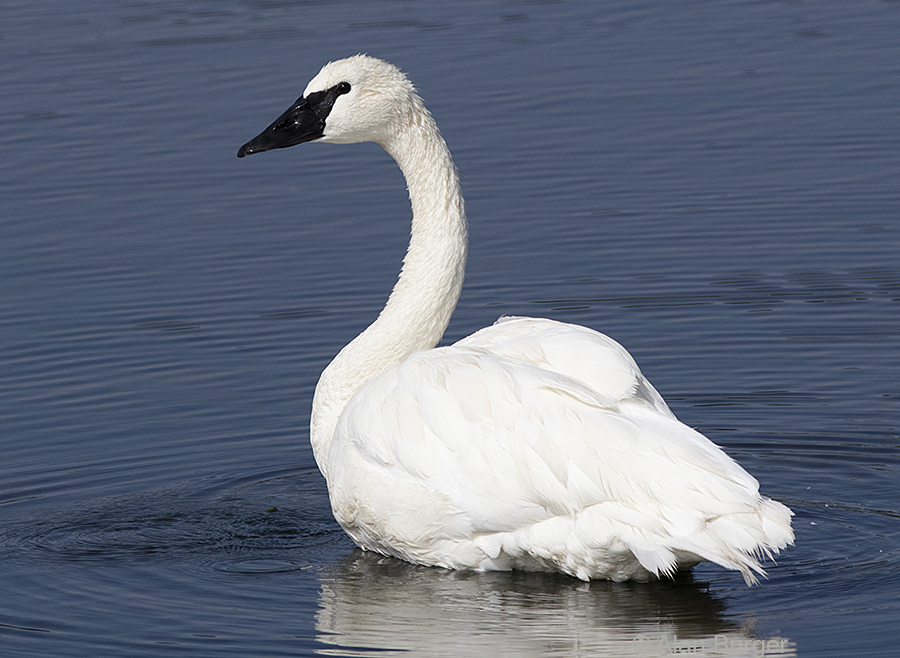
During our enforced wildfire evacuation we spent some days in Victoria. This Trumpeter Swan was still in Esquimalt Lagoon when its conspecifics had migrated north to breeding grounds in northern BC and beyond. 18 August 2021. © Alan Burger
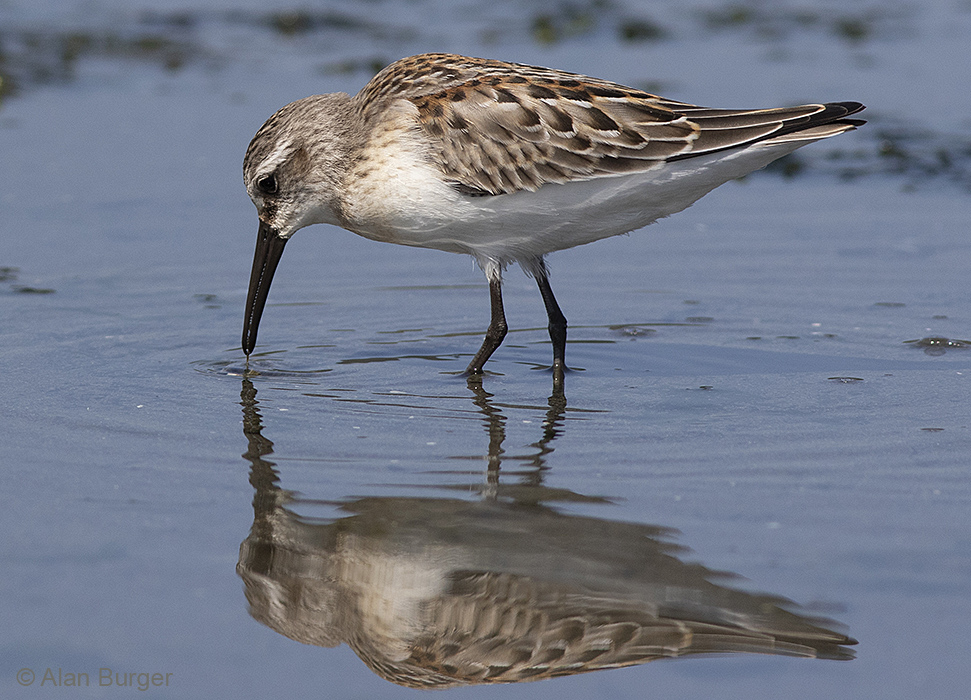
A Western Sandpiper at Esquimalt Lagoon, Victoria – 18 August 2021. © Alan Burger
Fall and Winter
Early fall remains a good time for birding in our area, with the passage of migrant birds. Mamit Lake is a great place for migrating shorebirds and waterfowl.
Mamit Lake in fall – September/October 2021 – click here
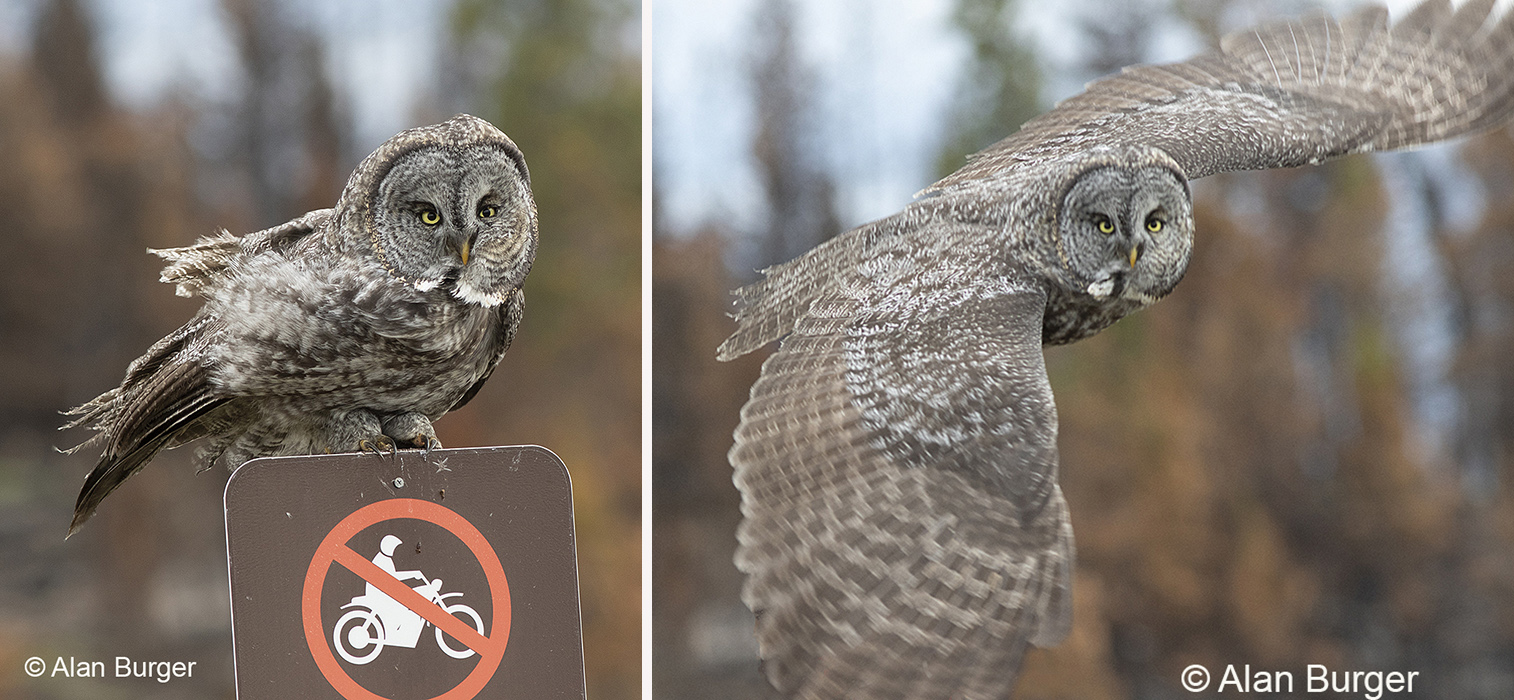
On a cold, windy October day I went with 2 friends up to Tunkwa Provincial Park. A highlight of the day was this Great Grey Owl. It was hunting in the small areas of unburnt forest and wetland. One can see how windy it was in the photo on the left. 2 October 2021. © Alan Burger
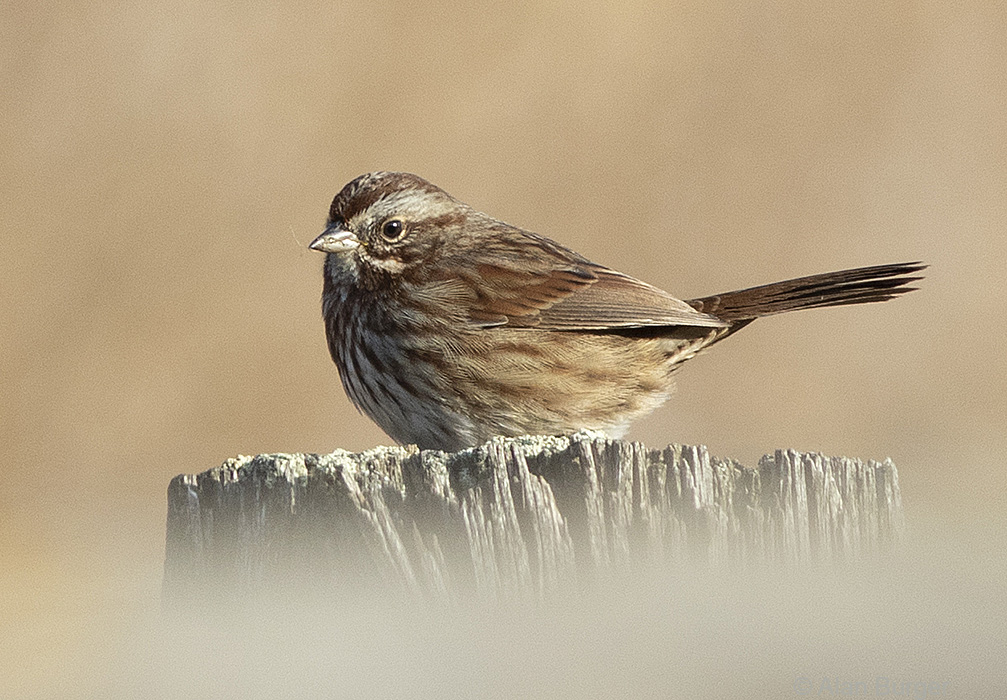
Song Sparrows are one of our most widespread and common sparrows. A wooden fence created a pleasing blurring in the lower part of this photo. © Alan Burger
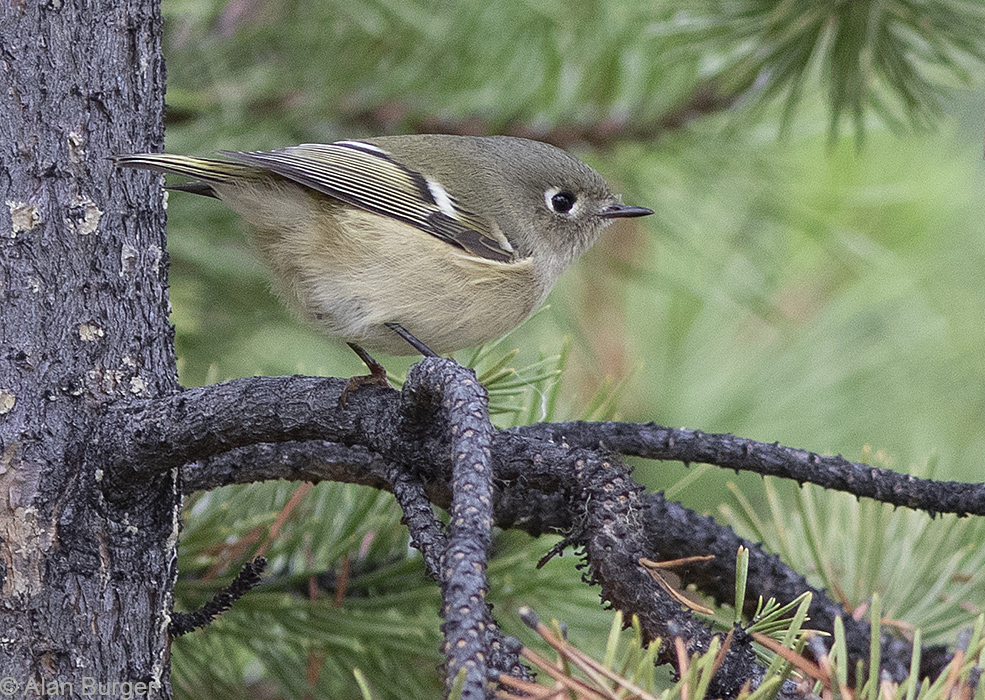
Ruby-crowned Kinglets are a difficult species to photograph. They are small and almost constantly on the move among the foliage. Tunkwa Provinicial Park, 2 October 2021. © Alan Burger
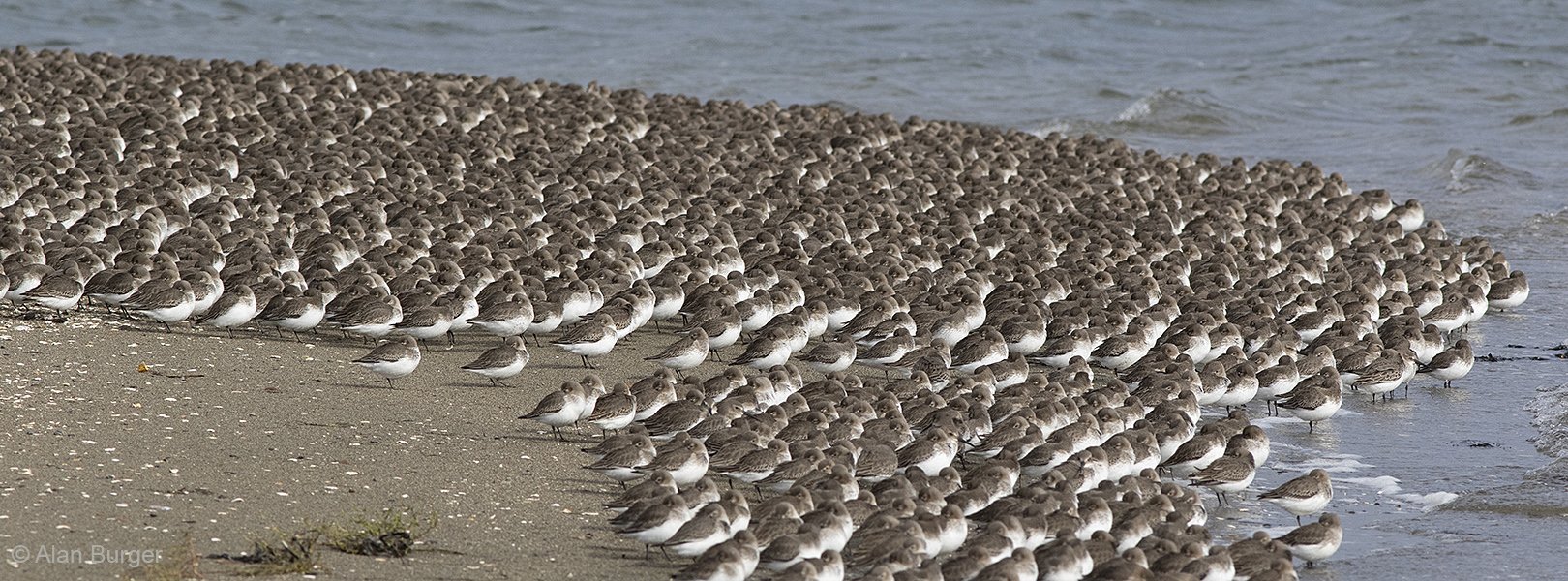
A trip to Vancouver Island allowed me to stop over at Blackie Spit, White Rock near Vancouver. I was there at high tide and the Dunlin were all resting. This is part of a dense flock that I estimated had over 2,000 Dunlin in it. 27 October 2021. © Alan Burger
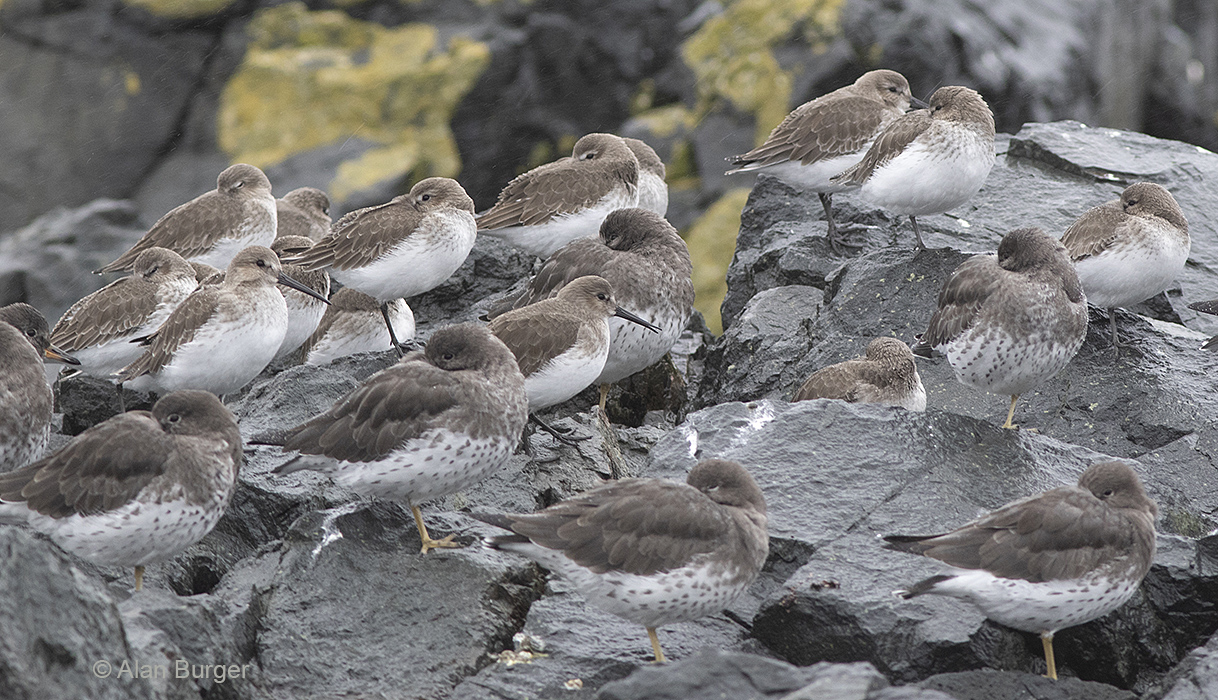
On the same trip I enjoyed a day of ocean kayaking off Nanaimo and encountered this mixed flock of Dunlin and the larger yellow-legged Surfbirds roosting at high tide. 28 October 2021. © Alan Burger
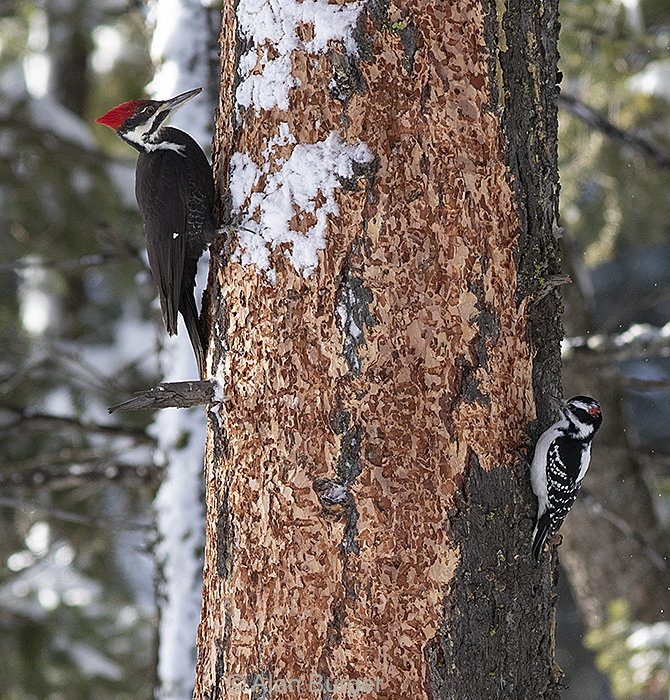
During the Kamloops Christmas Bird Count my companion and I were attracted to this heavily pecked Douglas-fir tree. A female Pileated Woodpecker and a male Hairy Woodpecker were adding to the damage with a female Hairy out of the picture. Inks Lake area, Kamloops, 19 December 2021. © Alan Burger
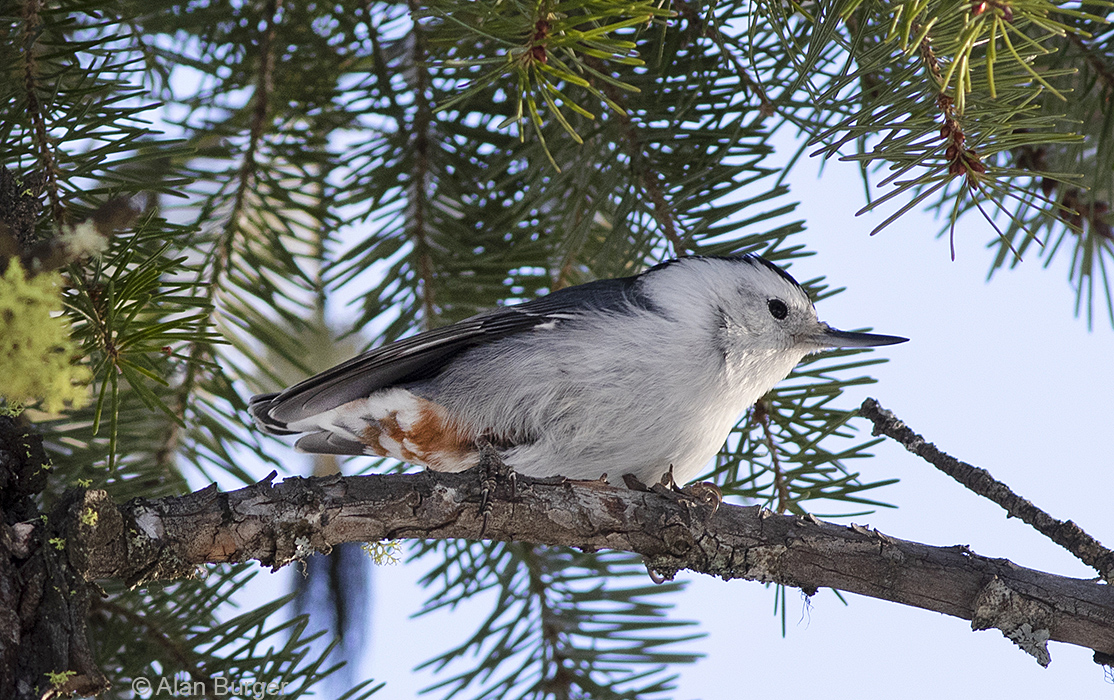
In the same Inks Lake area we encountered a mixed flock of Mountain Chickadees, Red-breasted Nuthatches and White-breasted Nuthatches. Here is one of the two White-breasted Nuthatches – they are uncommon in our area and these were the only ones recorded in the Kamloops Christmas Bird Count this year. 19 December 2021. © Alan Burger
~~~~~~~~~~~~~~~~~~~~~~~~~~~~~~~~~~~~
